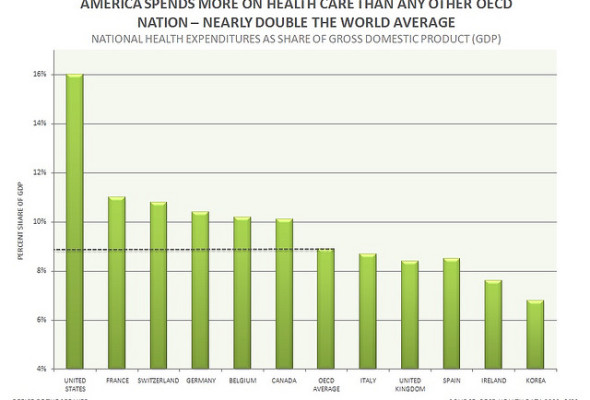Health insurance costs have been a huge focus in the past five years or so within the United States. The cost of health insurance has become a burden that more and more families have been unable to afford, thus denying basic health care to low-income families, or placing the burden of paying for the care on government-subsidized programs. With the Affordable Care Act, low cost health insurance will become more accessible for families across the United States – which is good news for cash-strapped individuals looking for cheap health insurance.
Health Insurance Costs Should be Reduced Under the Affordable Care Act
It’s called the Affordable Care Act for a reason: with the passage of this act, lawmakers have focused on making health insurance more affordable for everyone who needs it. The ACA functions in a few ways to help reduce the overall cost of health insurance:
- Insurers must charge a single premium based on age and region. Gone are the days when insurers charged premiums on a sliding scale based on gender, overall health, pre-existing conditions and a host of other factors. Under the ACA, insurers can only set a single premium for persons of a specific age and region, regardless of other factors.
- Federal subsidies for low-income individuals. The ACA has instituted federal subsidies to help cash-strapped families pay for the cost of health insurance. Americans whose household income falls below 400% of the federal poverty line may be eligible for subsidies – with families on the lower end of the spectrum getting subsidies of up to 50%. This effectively lowers the cost of health insurance for these individuals.
- Expanded Medicaid coverage. If cheap health insurance still isn’t cheap enough, the ACA has also expanded Medicaid coverage to include individuals and families whose income is up to 133% of the poverty level, although states can elect to set their own Medicaid eligibility thresholds below this number. This will make Medicaid coverage accessible for many more families, but could create a gap in coverage within states whose Medicaid threshold is below the level at which federal subsidies are available.
In all, the Affordable Care Act is expected to lower health insurance costs and make low cost health insurance more accessible. Relatively healthy, young individuals may find the cost of health insurance slightly higher, but premiums should be down overall – particularly among people with health problems who might have difficulty getting coverage otherwise.
Image used under a creative commons license.





